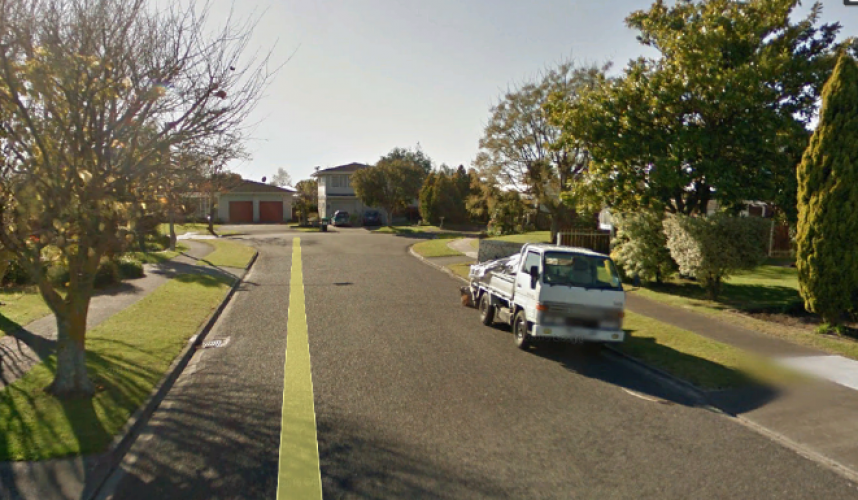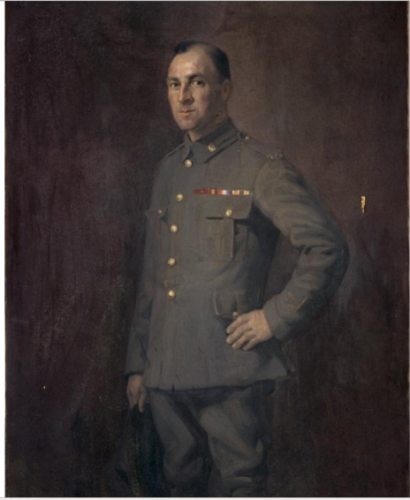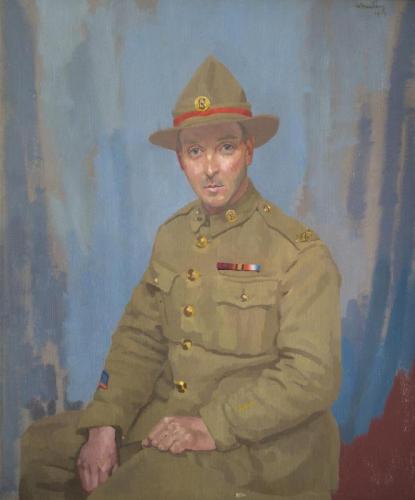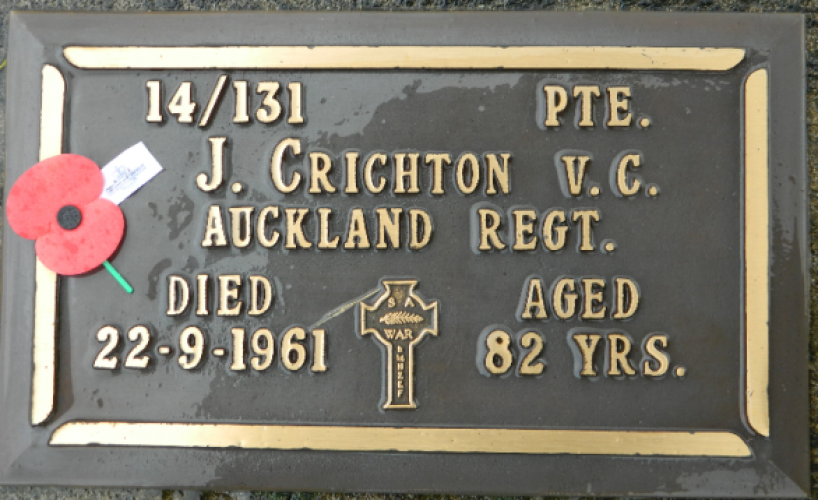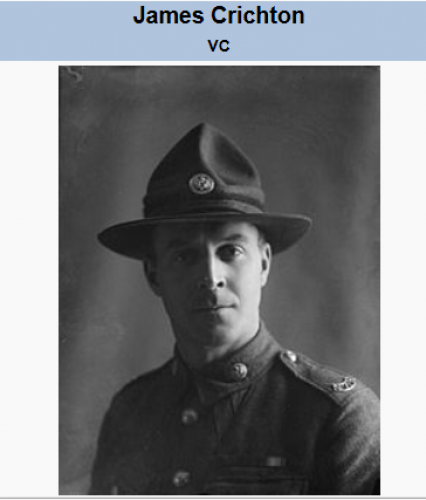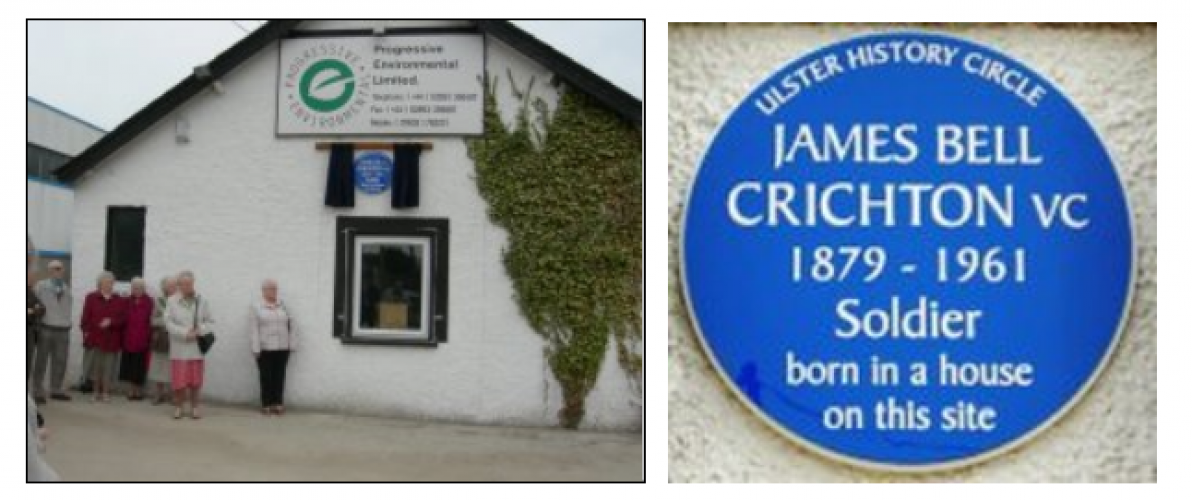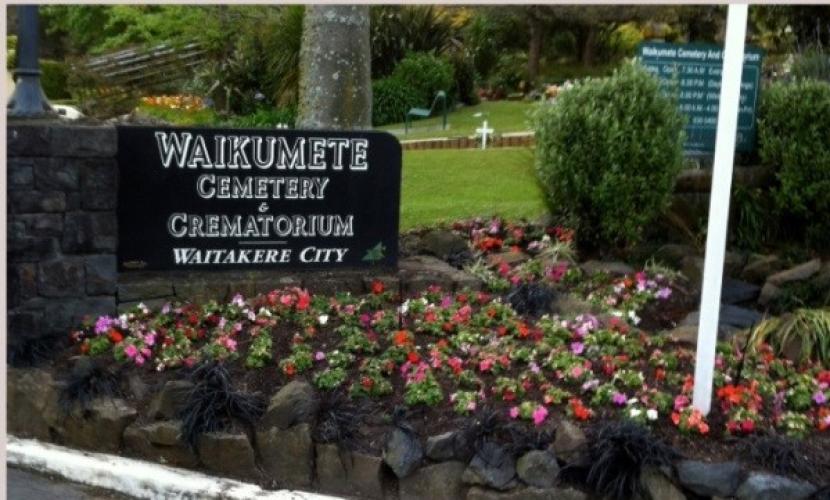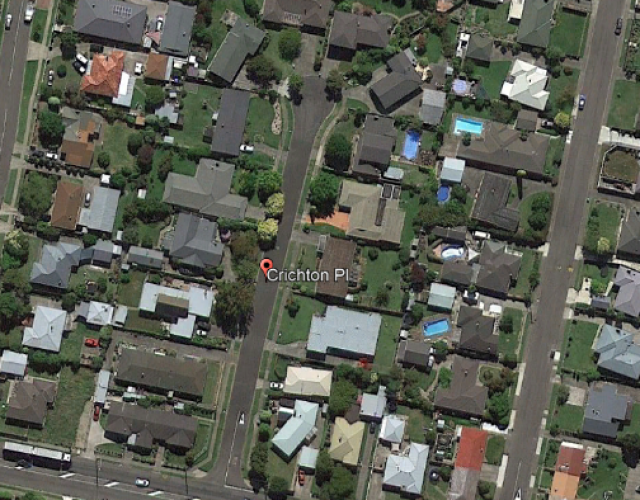190 Crichton Place Taradale, Street view 2018
Reason for the name
In keeping with Council policy, streets throughout Taradale Napier were named in honour of Victoria Cross winners. James Crichton, VC (15 July 1879 – 22 September 1961) was an Irish-born soldier and a recipient of the Victoria Cross (VC), the highest award for gallantry in the face of the enemy that can be awarded to British and Commonwealth forces.
Born in 1879 in Northern Ireland, Crichton served with the British Army during the Second Boer War, and later immigrated to New Zealand. Following the outbreak of the First World War, he joined the New Zealand Military Forces and served with the Army Service Corps during the Gallipoli Campaign and on the Western Front in a field bakery. He transferred to the infantry in May 1918 and was awarded the VC for his actions during the Hundred Days Offensive. He went to London in 1937 for the coronation of King George VI and Queen Elizabeth and again nearly 20 years later for the VC centenary. He died in 1961, aged 82.
Author: Poppy Places Trust
Early life
Crichton was born in Carrickfergus, in Northern Ireland, on 15 July 1879. His family moved to the mining hamlet of Northrigg by Blackridge in what is now West Lothian, Scotland, when he was young. By the age of 10, he was working in a coal mine. Nicknamed "Scotty", he joined the British Army by enlisting in the Royal Scots Regiment at the age of 18. Two years later, he transferred to the Cameron Highlanders. He remained with the Highlanders for five years, including a period in South Africa during the Second Boer War, before returning to civilian life. He later moved to New Zealand and settled in Auckland where he worked as a cable splicer with the Post Office and Telegraph Department.
First World War
Following the outbreak of the First World War, Crichton volunteered for the New Zealand Military Forces and was sent to the Middle East with the main body of the New Zealand Expeditionary Force (NZEF) in October 1914. Promoted to corporal, he was posted to the New Zealand Army Service Corps (NZASC) as a baker in the 1st Field Bakery. He served in the Gallipoli Campaign and, at its conclusion, was promoted to quartermaster sergeant. Two months later, he was promoted again, to warrant officer, 2nd class, before being sent to the Western Front as part of the New Zealand Division.
In May 1918, having served with the 1st Field Bakery for over three years, Crichton wanted a transfer to serve with the infantry and experience frontline action. He relinquished his rank as a warrant officer and was posted to the infantry. He later stated that he had been selected for officer training with the NZASC, but a senior officer in the Auckland Infantry Regiment offered to arrange his transfer if permission was obtained. It was made clear to him that he would be reduced in rank if he was to proceed with the transfer. Initially placed in the 3rd Entrenching Battalion, one of the training units of the New Zealand Division, he was transferred to the Auckland Infantry Regiment and posted to its 2nd Battalion with the rank of private in late August 1918.
During the Hundred Days Offensive, on 30 September 1918, Crichton's platoon was trying to force a crossing of the Scheldt River, near Crèvecœur, when it came under machine-gun fire. With several men killed, including the platoon commander and senior non-commissioned officer, Crichton and the remnants of the platoon were trapped on an island in the middle of the river. Furthermore, the bridge leading to Crèvecœur was wired for demolition. Despite a foot wound, Crichton volunteered to inform company headquarters of the platoon's situation.
Fully clothed, Crichton swam the river and despite being exposed to German gunfire as he made his way up the bank, he was able to make his report to the company's commander. He then returned to the trapped platoon, carrying a message to hold on for reinforcements. While waiting assistance from other units, Crichton decided to deal with the demolition charges on the bridges and took out the fuses and detonators. While doing so, he was exposed to gunfire from German snipers.
After he returned to his company commander to report his successful deactivation of the demolition charges, Crichton attempted to re-join his platoon but was ordered to remain behind at company headquarters. He then assisted stretcher bearers transporting wounded soldiers before the gravity of his wounds became apparent and he was taken, despite his protests, to a field hospital. He was later evacuated to England for further treatment. Promoted to sergeant, he was still recovering from his wounds when the war ended.
Crichton was awarded the Victoria Cross (VC) for his deeds of 30 September 1918. The VC, instituted in 1856, was the highest gallantry award that could be bestowed on a soldier of the British Empire.
The citation for his VC read:
For most conspicuous bravery and devotion to duty when, although wounded in the foot, he continued with the advancing troops despite difficult canal and river obstacles. When his platoon was subsequently forced back by a counterattack he succeeded in carrying a message which involved swimming a river and crossing an area swept by machine-gun fire, subsequently re-joining his platoon. Later he undertook on his own initiative to save a bridge which had been mined, and, though under close fire of machine-guns and snipers, he succeeded in removing the charges, returning with the fuses and detonators. Though suffering from a painful wound he displayed the highest degree of valour and devotion to duty.
— The London Gazette, No. 31012, 15 November 1918[6]
Crichton's VC was the last to be won by a serviceman of the NZEF during the First World War. Together with three other New Zealanders who had been awarded the VC, he received his medal from King George V in a ceremony at Buckingham Palace on 27 February 1919. He returned to New Zealand in June 1919 and shortly afterwards was formally discharged from the NZEF.
Later life
After leaving the military, Crichton resumed his pre-war profession as a cable splicer. He was part of the New Zealand contingent sent to London in 1937 for the coronation of King George VI and Queen Elizabeth. At the time, he was working for the New Zealand Post & Telegraph Department as a foreman. He retired two years later.
During the Second World War, Crichton served in the Home Guard and worked on merchant ships travelling between New Zealand and England. At 76, he returned to London in 1956 as part of the VC centenary celebrations.
Crichton died at Auckland Hospital in Takapuna on 22 September 1961. Survived by his wife and daughter, he is buried in Waikumete Cemetery in Auckland. Several memorials are dedicated to his memory including a plaque on the first house in which his family lived in Carrickfergus, his place of birth, in Northern Ireland. The town's museum also has a plaque honouring Crichton and another VC recipient from Carrickfergus, Daniel Cambridge. His name is recorded on the Armadale & District Roll of Honour, which included the Scottish village of Blackridge, where he had lived as a boy. In New Zealand, there is a plaque dedicated to him in Queen's Garden in Dunedin. A street in the town of Hastings is named for him.
After his death, Crichton's family donated his VC to the Auckland War Memorial Museum, which continues to hold the medal along with his service medals from the Boer War and the First and Second World Wars.


